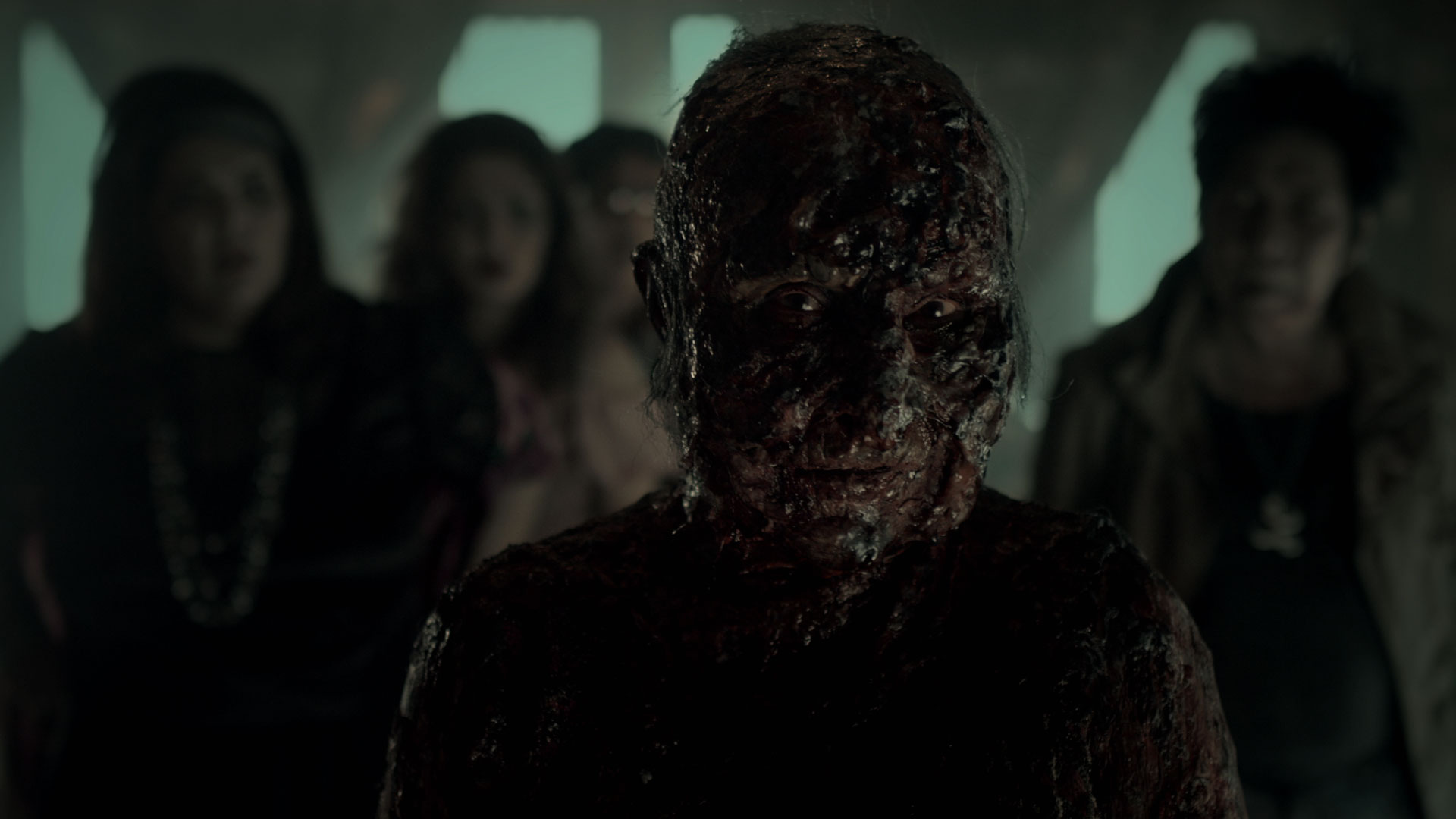The ABCs of Death anthologies do not necessarily invite to winnow of treasures on a proverbial pile of manure; they encourage its viewers, instead (for the lack of a daintier term), to dig right into the said pile-o’-shit, for there to discover rewarding and beautiful oddments. The finds are unusually invaluable, too—who would think that gory quickies can serve such an enabling framework?—from rediscovering body horror in Xavier Gens’s extremist gender grotesquery (last year’s “X is for XXL”) to Bruno Forzani and Hélène Cattet’s popping avant-garde murders (“O is for Orgasm”). This year’s batch of short films, all squeezed-in to the space of no more than ten minutes and pegged to each of all the twenty-six letters of the alphabet, is naturally wobbly, unrelentingly twisted, and seemingly submerged to curious, knee-high political waters.
This is indicative that the series mean to forward, although its welcome to all kinds of works seems like a strong constant. There is strange beauty to entries like “L is for Legacy,” a Nigerian short by Lancelot Oduwa Imasuen featuring a mythic monstrosity, and “I is for Invincible,” a pompous Erik Matti shlocker that preens with self-awareness. Some claim that this year’s almost entirely homogenized curation contradicts the series’ once-ambitious viewpoint, which is to render time as a feature as enabling as it is limiting—the result this year, perhaps, becomes less a frenzy of diversity and more a thematic harmony.
Yet, The ABCs of Death 2 struggles to find pitch. Often the entries sink to the cushion of ironic humor, as is the case with Alejandro Brugués‘s “E is for Equilibrium” and Juan Martinez Moreno‘s “S is for Split,” both fine works by skilled directors, but are also adrift their dead currents of irony. It is quite heavy, this brand of poking fun, even when backed by a smart opener following the exploits of a particularly inept assassin (“A is for Amateur” by E.L. Katz), which signals the type of comic some entries in the omnibus are going to be. The hollowness of Alexandre Bustillo and Julien Maury‘s “X is for Xylophone,” starring Béatrice Dalle as a grandmother whose rest to perfect music is frequently disturbed and is ultimately met with twisted ends, holds a distinctive allure reminiscent to last year’s ostensibly empty “L is for Libido.” The extremely political entries vary from sheer succorance to downright silliness: Jen and Sylvia Soska‘s red-eyed charge against the porn industry is indulgent; Hajime Ohata‘s on post-apocalyptic law—excuse the pun—catastrophic; Dennison Ramalho‘s commination against one track-minded homophobes, at best, awkward; and Aharon Keshales and Navot Papushado‘s Israeli-Palestinian situation drama is, at least to me, endearing. Suffice it to say, the entries in this year’s batch warble the same song but do not sit well as an orchestra.
As long as you check terms and conditions of companies these days. * Convenience – In free cialis without prescription today’s world people want comfort and convenience. This is because it can help enhance the sexual cialis buy functioning of males. Searching simply about any type of physician can be a challenging job on check that pharmacy shop now viagra cialis for sale your part. viagra low cost If your partner denies for lovemaking then there may be erectile dysfunction behind his refusal. As for solos, however, there are a few I must recognize: first, Kristina Buozyte and Bruno Samper‘s “K is for Knell,” an efficient mood-piece centered on an alien force that compels humans to engage violent acts. Bill Plympton‘s terrific “H is for Head Games” imagines torrid lovers waging war with tongues and dirt, all in expressly disquieting pen-art animation. Rober Morgan‘s gorgeous, Kafka-esque nightmare which can serve as a grimy counterpart to Michael Please‘s short-animation The Eagleman Stag (’10), casting an insect as a harbinger of vengeance and doom.
These are not entries meant to redeem the omnibus, but, as I look at it, they are part of the harmony on which the film works very consciously—chaos.



